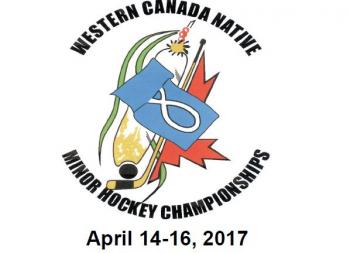By Sam Laskaris
Windspeaker Contributor
SASKATOON
A long-running Indigenous youth hockey tournament is turning 30 this year.
The Western Canadian Native Minor Hockey Championship has been held annually in Saskatoon since its inception. And the tournament will continue to be held there, even though the organizers, the husband and wife team of Claude and Ardis Petit, now live in Wetaskiwin, Alta.
Claude, a Métis who was born in Duck Lake, Sask., established the tournament when he was working as the recreation director for the Métis Society in Saskatoon.
He is now 81, and a member of the Order of Canada, and continues to be the tournament director.
According to the Governor General’s Website, Claude Petit was awarded the Order of Canada on Oct. 23, 1997 and was invested on Feb. 4, 1998.
“He has inspired countless Native youth to pursue athletics as an avenue to develop self-esteem and motivation,” reads his biography. “In the past thirty years, he has established numerous soccer, boxing and track teams and has launched Canada's first national junior Aboriginal hockey tournament. He personally coached hundreds of players in Saskatchewan, outfitting many teams at his own expense. He is considered by many to be a symbol of strength and a role model for the Aboriginal community.”
Though Claude and Ardis moved to Regina a few years after the minor hockey championship began, Claude continued to operate it out of Saskatoon. And he felt there was no reason to discontinue the tournament when he moved to his current home in Alberta.
As in all previous years, the 2017 tourney will be staged during the Easter weekend, from April 14 to April 16. All of the tournament games will be staged at the Canlan Ice Sports – Jemini facility.
“This arena has four sheets of ice,” said Claude. “We can go up to about as many as 60 teams there.”
In previous years, the tournament featured more than 100 participating clubs competing at two separate venues.
Organizers started scaling back the number of entrants a few years ago and opted to have the tournament staged at just one facility.
“You’ve got more control of it that way,” Petit said. “And all your officials and players are in the same place.”
Cutting back on the number of entrants was also a decision that was made for financial reasons.
“The cost of the ice in Saskatoon, even though we’re getting a deal on it, is well over $200 an hour now,” Petit said.
Tournament officials also have plenty of other expenses. Petit said organizers annually spend $6,000 on the hardware presented to competing players. Plus, it has become increasingly difficult to find volunteers for the event. As a result, officials now have to pay individuals for a variety of jobs, including scorekeeping and ticket takers.
Organizers are expecting between 50 to 60 clubs to take part in this year’s tournament. Besides Saskatchewan, in previous years, most of the other participating squads have been from Manitoba and Alberta.
An Ontario club will also be competing this year. And teams from British Columbia might also be taking part.
The exact number of entrants will not be confirmed until April 7, the tournament’s registration deadline.
The tourney will feature six age groupings, ranging from the Pre-Novice division for those ages six and under to the Midget category, featuring those 17 and under.
The other divisions offered will be for Novice (eight and under), Atom (10 and under), Peewee (12 and under) and Bantam (14 and under).
Petit said the calibre of competition at the tournament is top-notch. “It’s pretty well the upper classes (of those in minor hockey),” he said. “They’re exceptional hockey players.”
Petit’s wife handles the registration details and other paperwork associated with running the tournament. Petit, who served as a paratrooper with the Canadian Armed Forces for 16 years, said there’s no real secret to the event’s longevity.
“It’s just a great organized tournament,” said Petit.
“That’s why the coaches keep bringing their teams back.” The tournament primarily features First Nation, Métis and Inuit players. A tournament rule, however, stipulates each club can have as many as two non-Indigenous players on its roster.
Despite this rule, Petit said there are a number of participating teams that opt to ice an all-Indigenous lineup.
Previous participants includes two players that eventually graduated to the National Hockey League. They are Dwight King and Jordin Tootoo.
King, who is from Meadow Lake, Sask., is a 27-year-old forward with the Los Angeles Kings. He helped the Kings win the Stanley Cup in 2012 and then again in 2014.
King, who is Métis, is in his eighth pro season. Though he has also spent time with the Kings’ American Hockey League and East Coast Hockey League affiliates, he has been part of the Los Angeles organization his entire pro career.
Tootoo, the first Inuit player to make it to the NHL, is currently a member of the Chicago Blackhawks. The 34-year-old forward has appeared in almost 750 NHL contests.
Besides Chicago, he’s also played for the Nashville Predators, Detroit Red Wings and New Jersey Devils.

